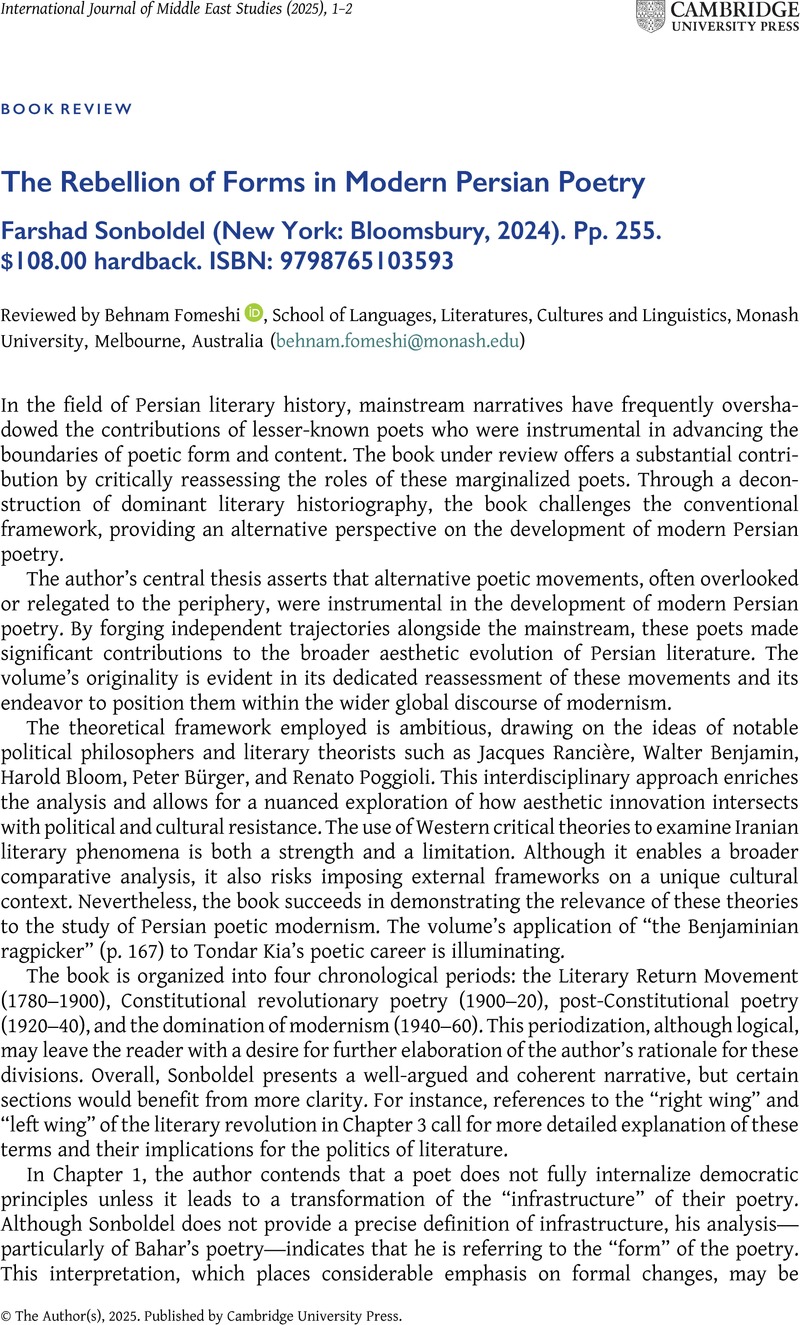No CrossRef data available.
Published online by Cambridge University Press: 03 January 2025

1 Behnam M. Fomeshi, “‘The Female Rumi’ and Feminine Mysticism: ‘God’s Weaver’ by Parvin Iʿtisami,” British Journal of Middle Eastern Studies 50, no. 2 (2023): 340–50.